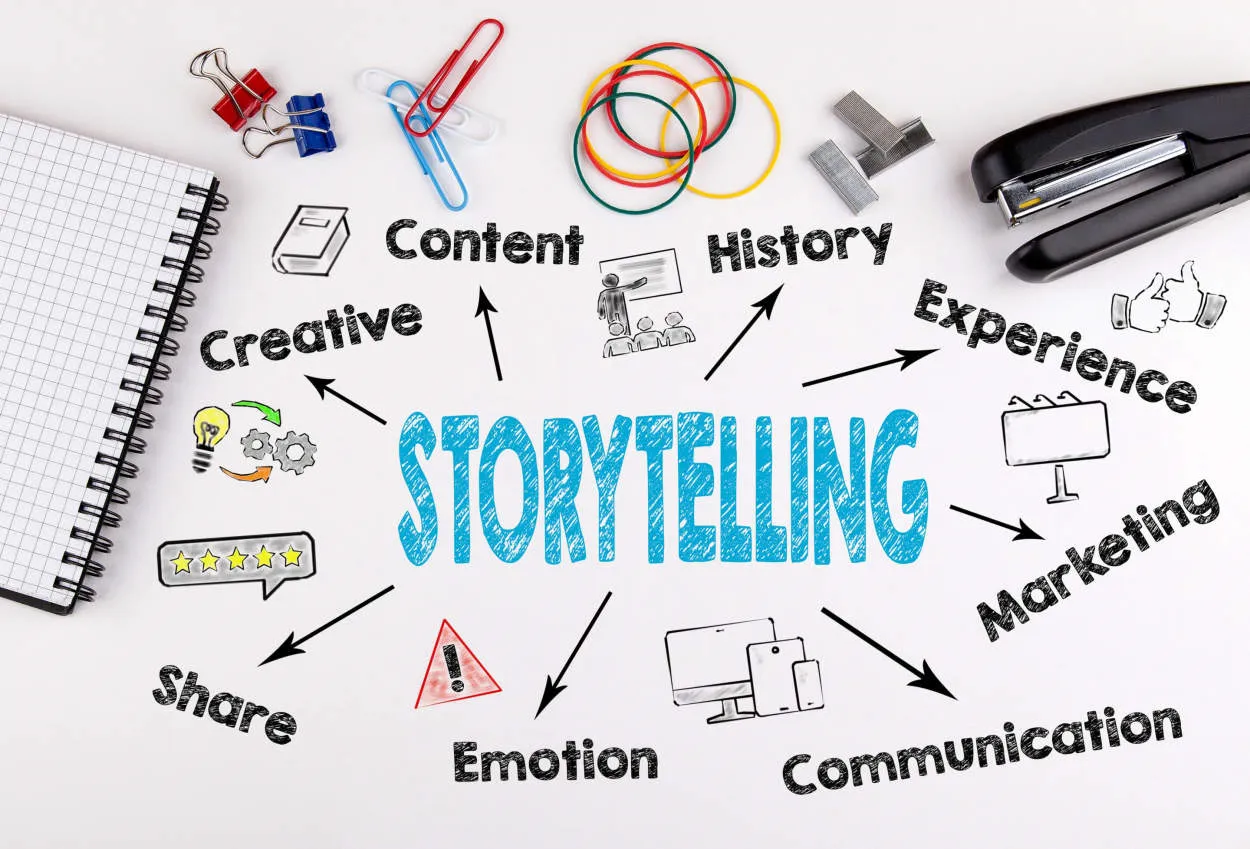Business storytelling in marketing is an art that fuels connections, captures attention, and leaves a lasting impression. Through compelling narratives, brands can engage their audience, evoke emotions, and effectively communicate their values and objectives. In this article, we will explore the power of storytelling and how it can elevate your marketing strategies to new heights.
Crafting Compelling Brand Narratives
In the world of marketing, the art of business storytelling plays a crucial role in captivating customers and building strong brand connections. A compelling brand narrative can effectively communicate a company’s values, mission, and unique selling proposition. By crafting a story that resonates with the target audience, businesses can differentiate themselves from competitors and establish an emotional bond with customers.
To create a compelling brand narrative, businesses should start by understanding their target audience and their needs. This involves conducting market research and developing buyer personas. By knowing who they are speaking to, companies can tailor their story to resonate with their audience and address their pain points.
A powerful brand narrative should have a clear structure, including a compelling beginning, middle, and end. Businesses should introduce their brand’s story by highlighting its origins, values, and vision. The middle part of the narrative should focus on showing how the company’s products or services can solve customers’ problems or fulfill their desires. Lastly, the ending should create a sense of anticipation or inspiration, leaving the audience wanting to engage further.
Visual storytelling can also enhance the impact of a brand narrative. Utilizing imagery, videos, and infographics can help reinforce the message and captivate the audience’s attention. Additionally, incorporating testimonials or success stories from satisfied customers can add credibility and create an emotional connection.
Furthermore, consistency is key in maintaining a strong brand narrative. All brand communications, from social media posts to advertising campaigns, should align with the overarching story. Consistency ensures that customers have a clear and unified perception of the brand, reinforcing its identity and values.
In conclusion, crafting compelling brand narratives is an essential aspect of marketing. By understanding the target audience, structuring the narrative effectively, utilizing visual storytelling, and maintaining consistency, businesses can create powerful stories that resonate with customers and establish a lasting emotional connection.
Using Visuals and Storyboards to Engage Audiences
In the world of marketing, the art of business storytelling has become an essential tool to captivate and connect with audiences. One powerful technique to enhance the impact of your business narratives is through the use of visuals and storyboards.
Visuals: Enhancing Your Message
Visuals, whether they are images, videos, or infographics, play a crucial role in grabbing the attention of your audience. They have the ability to convey complex ideas in a simplified manner and create a lasting impression. By incorporating visuals into your storytelling, you can engage your audience on a deeper level and make your message more memorable.
For example, using eye-catching images that reflect the emotions you want to convey can evoke a stronger response from your audience. Additionally, using compelling videos or animations can bring your stories to life, creating a more immersive experience for your audience. Remember to choose visuals that align with your brand’s identity and the message you want to convey.
Storyboards: Guiding Your Narrative
Storyboards are visual representations of your narrative, usually in the form of a series of drawings or sketches. They serve as a guide to help you structure your story and ensure a coherent flow. Storyboards are particularly useful when developing marketing campaigns or creating videos.
With storyboarding, you can plan out the sequence of events, visualize how your audience will experience your story, and identify any gaps or areas that need further development. This process allows you to refine your message, add impactful visuals, and create a more engaging and persuasive narrative.
Benefits of Visuals and Storyboards in Business Storytelling
Using visuals and storyboards in your business storytelling has several benefits:
- Increased engagement: Visuals capture attention and evoke emotions, making your stories more captivating.
- Improved comprehension: Visuals help simplify complex ideas, ensuring your audience understands your message.
- Enhanced retention: Visuals make your story more memorable, increasing the chances of your audience remembering and sharing it.
- Clear structure: Storyboards provide a clear framework, allowing you to organize your narrative effectively.
- Efficient collaboration: Storyboards facilitate communication between team members, ensuring everyone is aligned with the storytelling vision.
By using visuals and storyboards, you can elevate your business storytelling to new heights, leaving a lasting impact on your audience and achieving your marketing goals.
Storytelling Techniques for Effective Content Marketing
In the world of marketing, storytelling has become a powerful tool for businesses to engage their audience and create meaningful connections. Integrating storytelling into your content marketing strategy is the art of business storytelling. To captivate and convince your target market, here are some storytelling techniques that can make a significant impact:
1. Set the Stage
Begin by setting the stage and introducing your audience to the world of your brand. Establish a clear context by highlighting the challenges, desires, or problems that your target audience faces. This creates an emotional connection and sets the foundation for the story.
2. Develop Compelling Characters
Your story needs characters that your audience can relate to. Develop compelling characters that represent your ideal customer or showcase the transformation your product or service can offer. Make them relatable and provide enough depth to engage and connect on an emotional level.
3. Create Conflict and Resolution
A powerful story has conflict and resolution. Introduce obstacles or challenges that your characters encounter on their journey. This conflict creates tension and keeps your audience engaged. Then, present your product or service as the solution that resolves the conflict and brings about a positive outcome.
4. Use Emotion and Authenticity
Inject emotion into your storytelling. Appeal to your audience’s feelings, dreams, or aspirations. Be authentic and transparent, as people resonate with genuine stories. Emotional connections can trigger action and drive your audience to engage with your brand.
5. Utilize Visuals and Multimedia
Enhance your storytelling with visuals and multimedia elements such as images, videos, or infographics. Visual aids help bring your story to life and make it more memorable. They also facilitate better understanding and engagement with your marketing content.
6. Incorporate a Call-to-Action
Every storytelling piece should have a specific call-to-action (CTA) that directs your audience towards the desired action. Whether it’s making a purchase, signing up for a newsletter, or sharing your content, a clear and compelling CTA can drive conversions and further deepen the relationship with your audience.
By implementing these storytelling techniques, businesses can effectively leverage the art of business storytelling in their content marketing strategies. Connecting with your audience on a deeper level and leaving a lasting impression, storytelling can be a game-changer for your brand.
Conclusion
The use of storytelling in marketing is a powerful tool for businesses to connect with their audience, evoke emotions, and build strong brand relationships. By incorporating elements of storytelling such as a compelling narrative, relatable characters, and a clear message, companies can effectively communicate their brand values and engage customers on a deeper level. In today’s highly competitive business landscape, mastering the art of business storytelling can be the key to successfully capturing the attention and loyalty of consumers.




